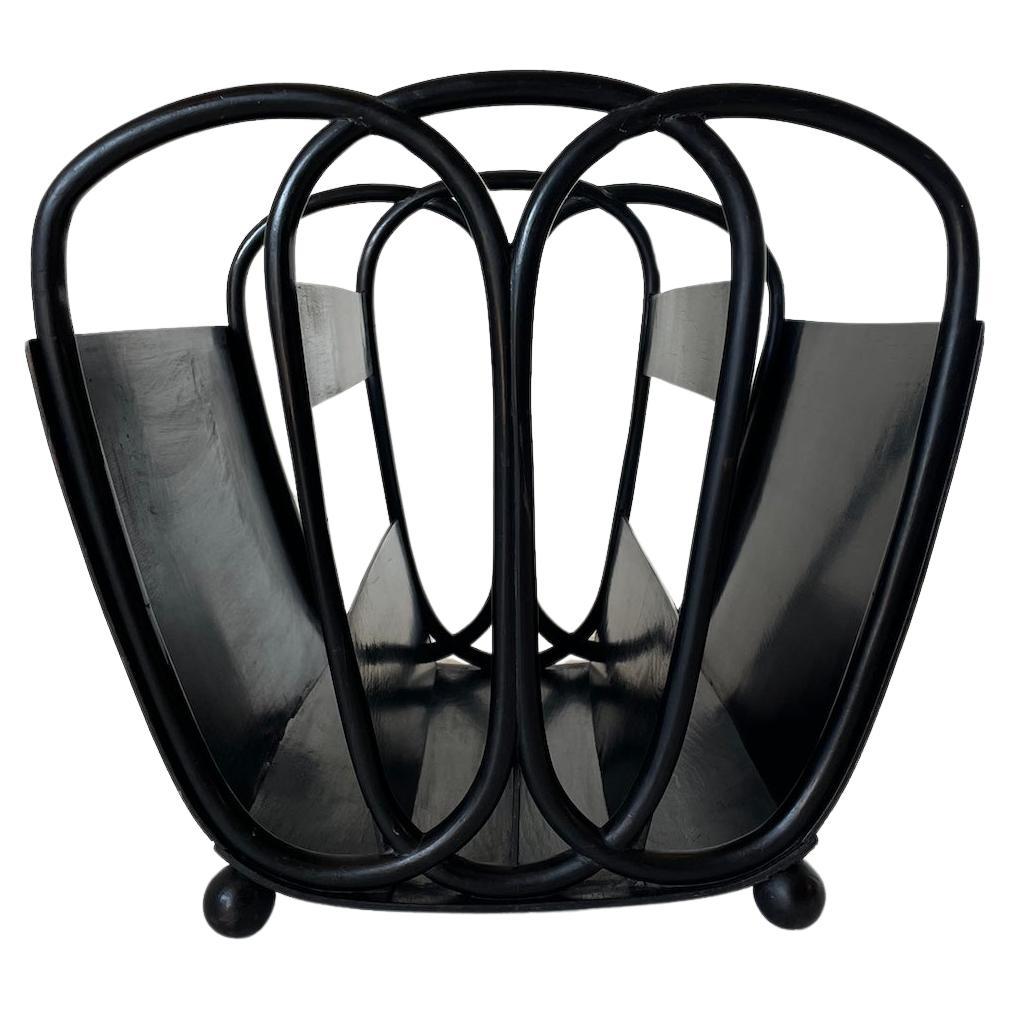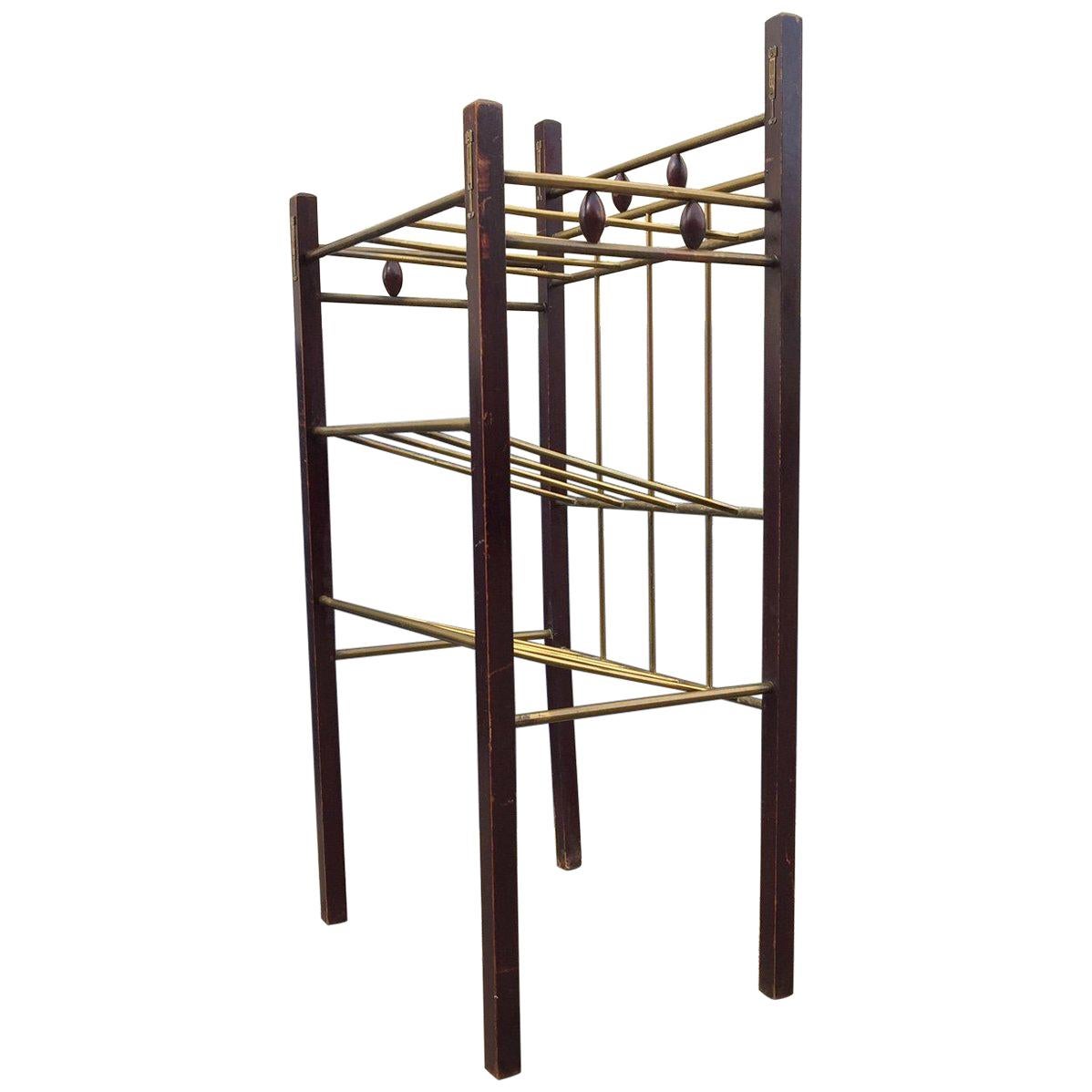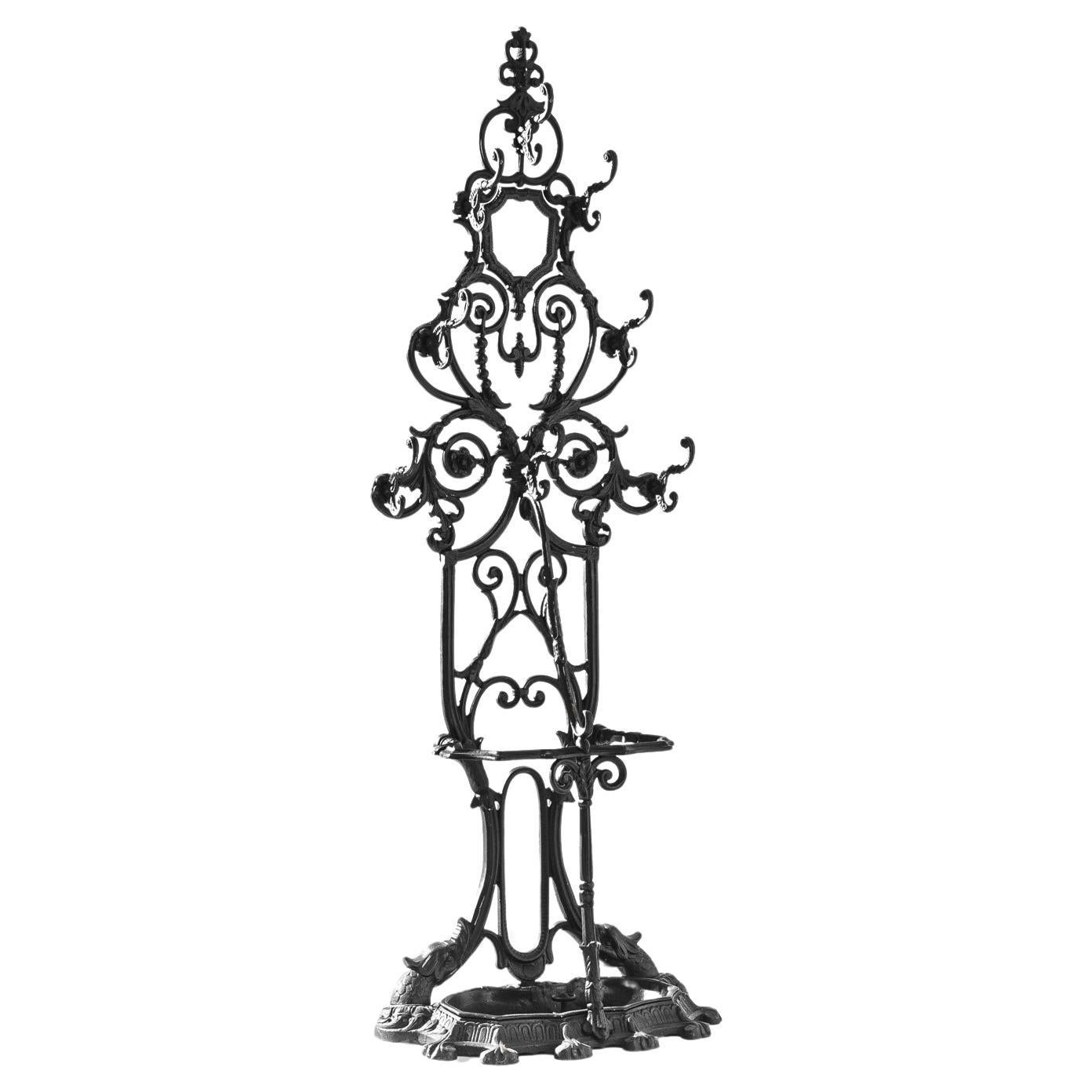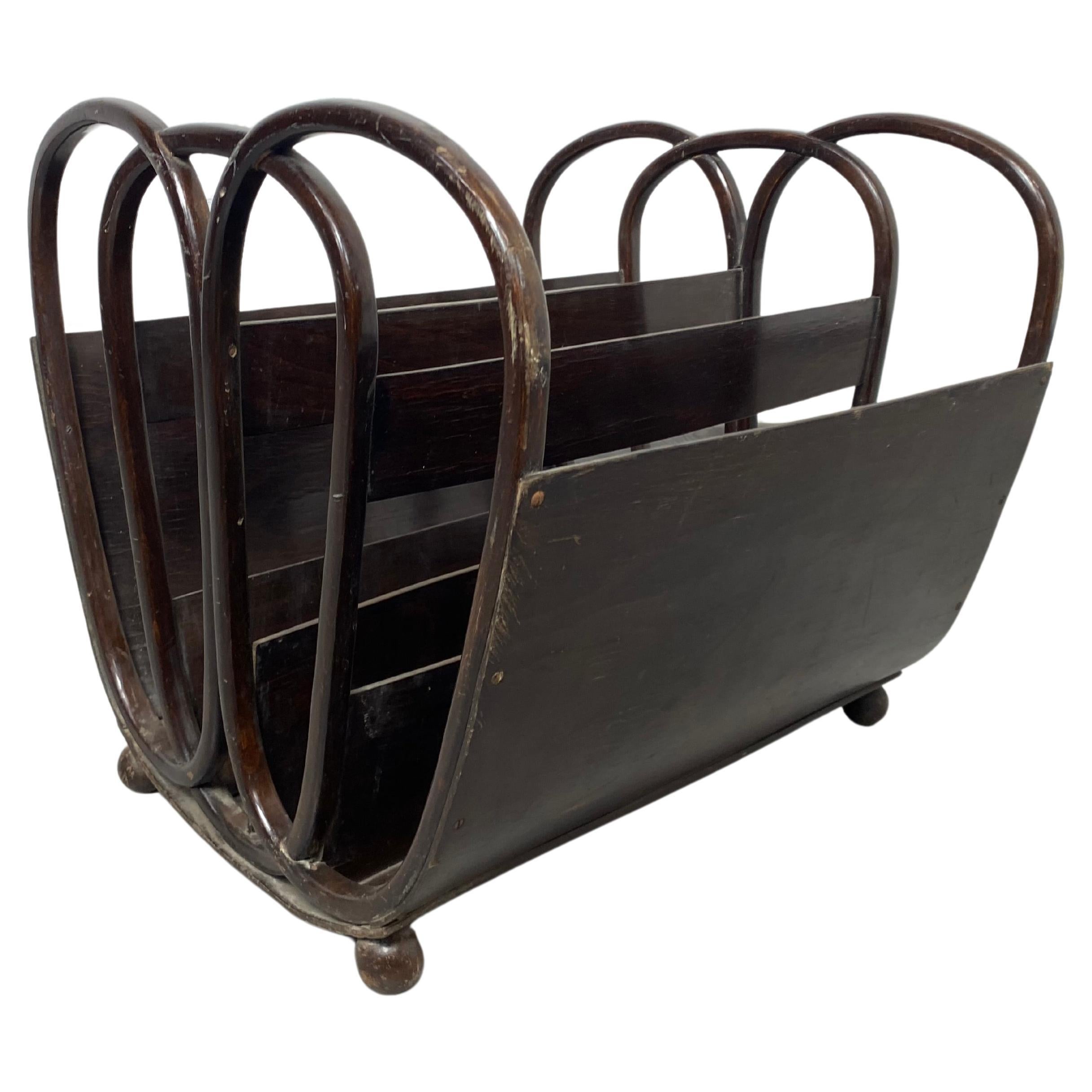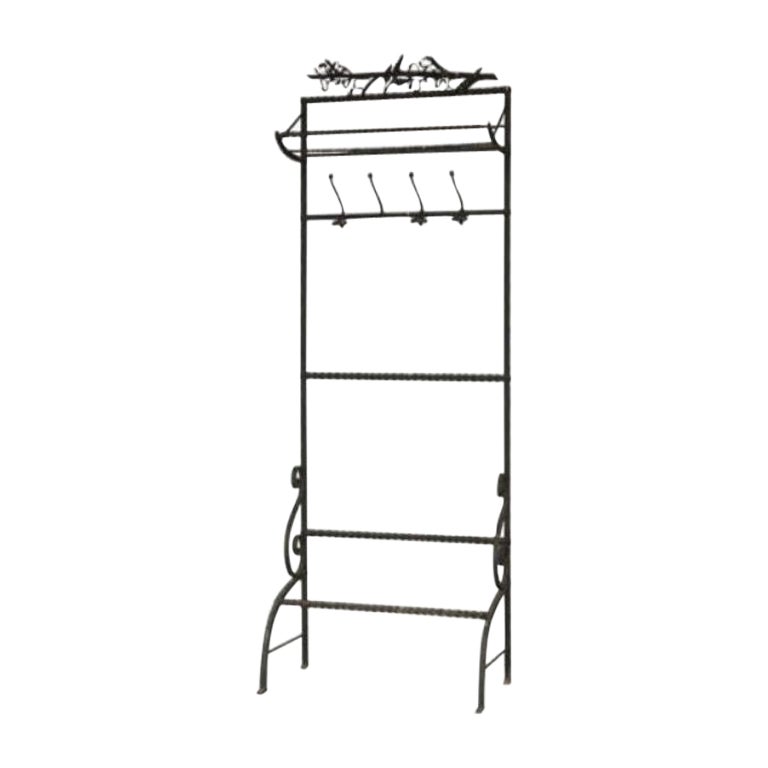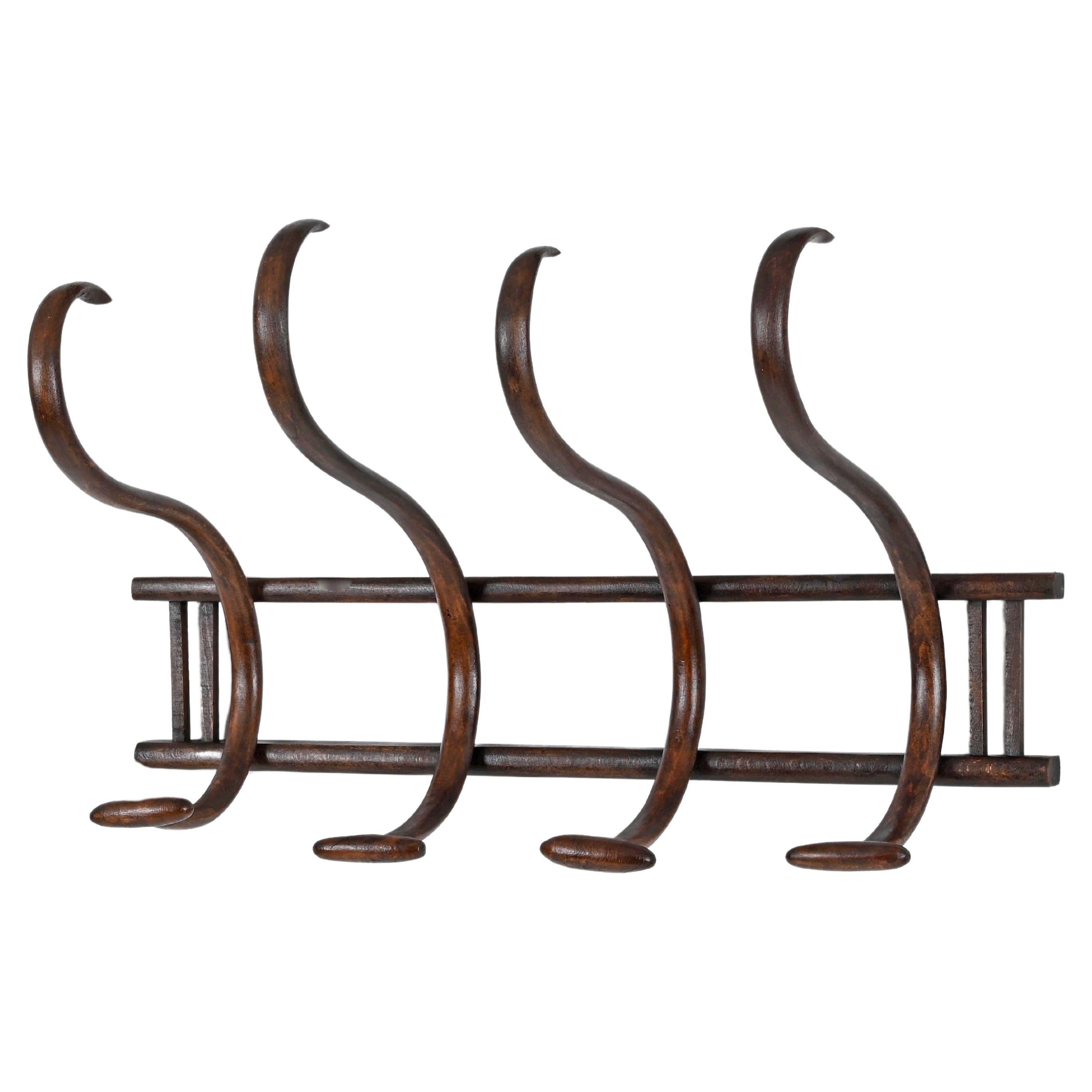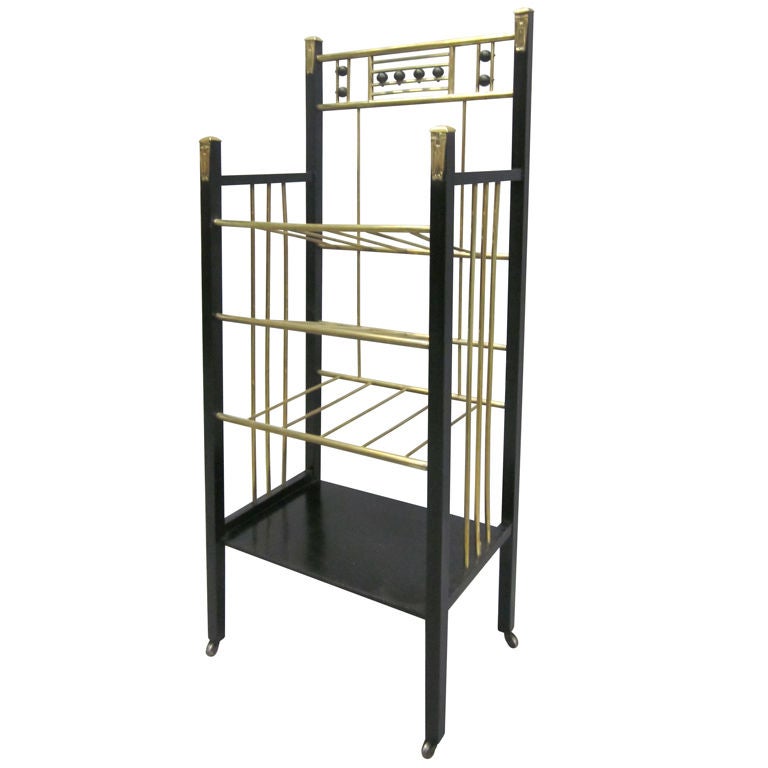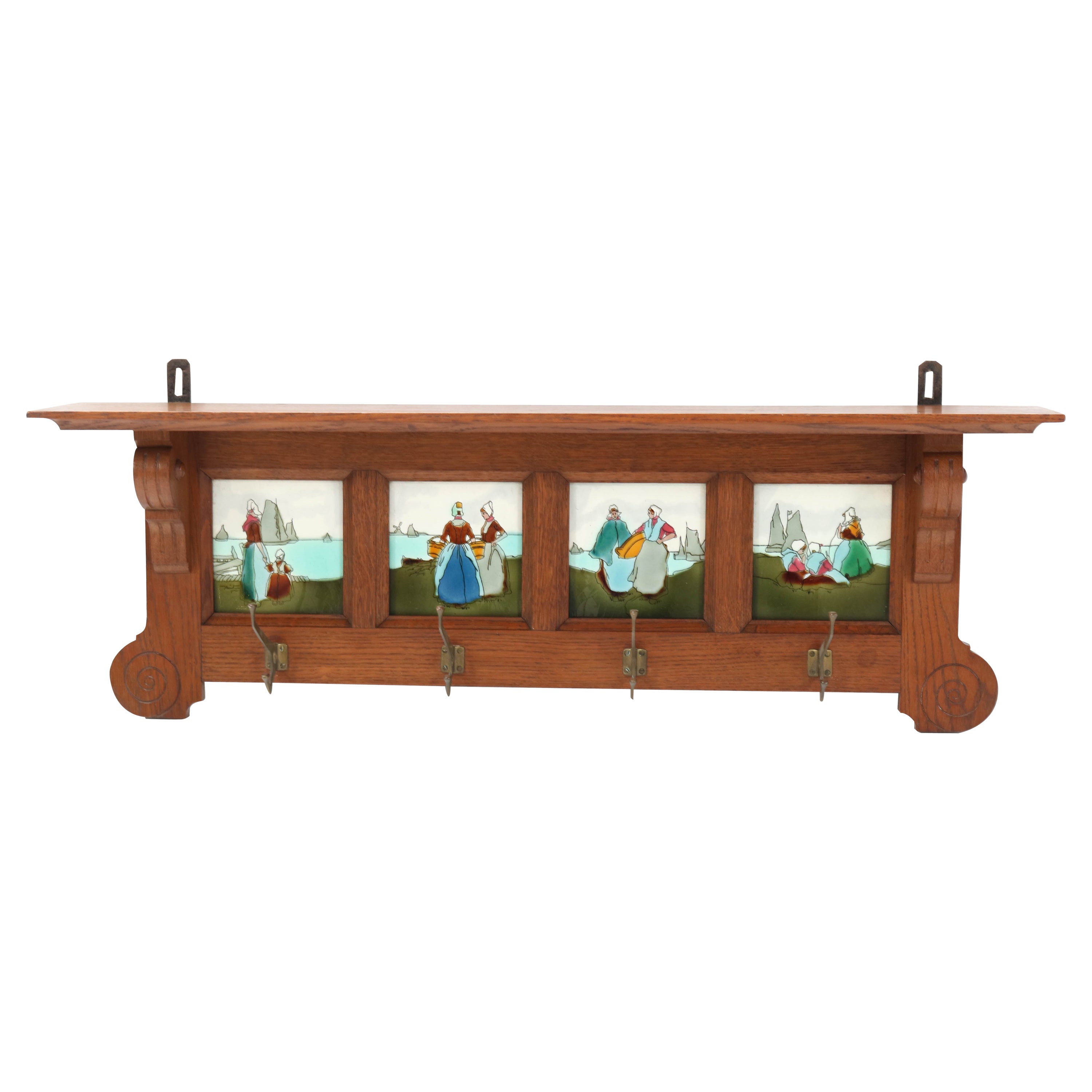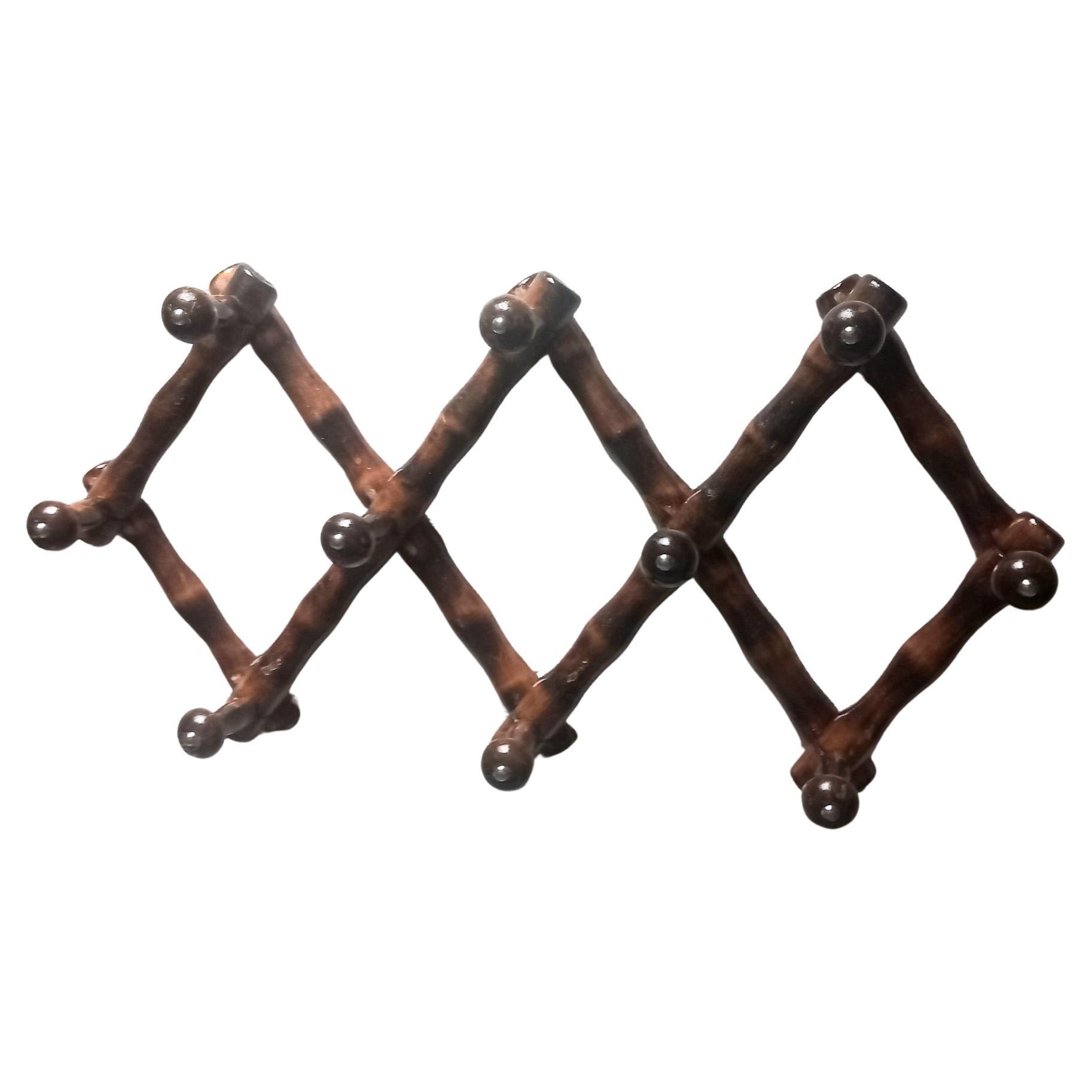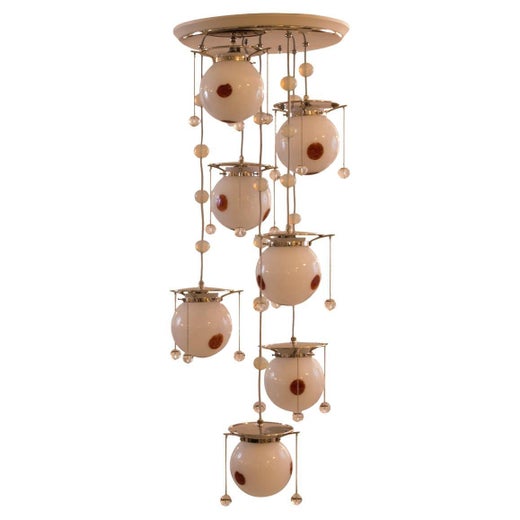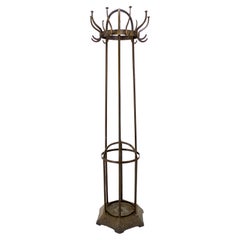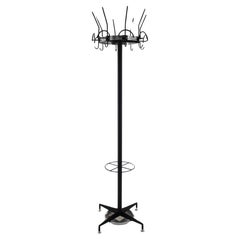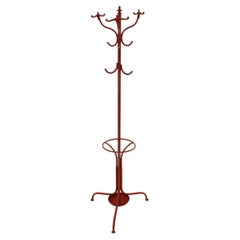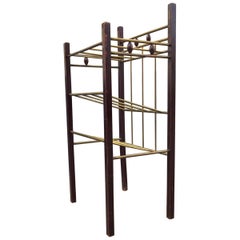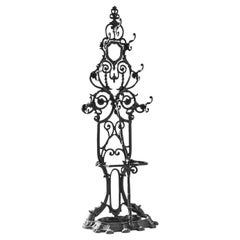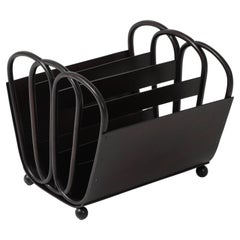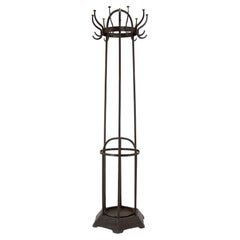
Iron Coat Rack by Koloman Moser, Wiener Werkstatte, 1900s
View Similar Items
Iron Coat Rack by Koloman Moser, Wiener Werkstatte, 1900s
About the Item
- Creator:Koloman Moser (Designer)
- Dimensions:Height: 73.23 in (186 cm)Diameter: 20.08 in (51 cm)
- Style:Art Nouveau (Of the Period)
- Materials and Techniques:
- Place of Origin:
- Period:1900-1909
- Date of Manufacture:1900s
- Condition:Wear consistent with age and use.
- Seller Location:Praha, CZ
- Reference Number:Seller: MaPr TK 65 01stDibs: LU2456330288082
Koloman Moser
Born in Vienna in 1868, Koloman Moser briefly attended trade school, honoring his father’s wish to see him in commerce. But he soon surrendered to his artistic inclinations, enrolling in 1885 in Vienna’s Academy of Fine Arts, where he studied painting.
When his father died unexpectedly in 1888, leaving the family in financial straits, Moser (1868–1918) helped out by doing illustrations for books and magazines. Meanwhile, he continued his painting studies, at the academy and then at the School of Arts and Crafts, starting in 1892. That was also the year that Moser, along with other young artists revolting against the Viennese art world’s devotion to naturalism, formed the Siebner Club, the precursor to the Vienna Secession.
Moser’s introduction during his last term at school to Gustav Klimt’s Allegory of Sculpture proved a turning point for the young artist. Christian Witt-Dörring, guest curator of the 2018–19 exhibition “Koloman Moser: Universal Artist between Gustav Klimt and Josef Hoffmann” at the MAK in Vienna, noted a change in the artist’s drawing style. “Primarily inspired by the art of Japan, [Klimt] introduces new paper sizes, fragmented image details, and an emphasis on the line as opposed to the surface,” wrote Witt-Dörring in the exhibition’s catalogue.
A year later, in 1897, Moser together with Klimt, Carl Moll, Joseph Olbrich and Josef Hoffmann founded the Vienna Secession, a union of artists and designers determined to upend Austria’s artistic conservatism. The members were committed to making total works of art: Gesamtkunstwerken. Looking to the English Arts and Crafts Movement, with its guiding principle of unity of the arts, the group attempted to bring art back into everyday life and introduce a local modernism to fin-de-siècle Vienna. Moser, whose membership in the club also afforded him entry into upper-class Viennese society, turned his back on oil painting and forged ahead with Gesamtkunstwerk.
Moser created everything from exhibition design to facade ornamentation for the Secession Building, to graphic materials. Moser also produced posters and advertisements in his “modern style” for various companies. In 1898, he presented his first decor pieces, including hand-knotted rugs and cushion covers. In 1899, Moser began what would become a lifelong professorship at the School of Arts and Crafts. His repertoire now expanded to include furniture, ceramics and patterns like his trademark checkerboard design. He also moved into scenography and fashion and established himself as an interior designer.
The artist decorated his own home in 1902, after which he received a series of important commissions, notably the villa of textile industrialist Fritz Waerndorfer. It was Waerndorfer who provided the financial support that enabled Moser and Hoffmann in 1903 to found the Wiener Werkstätte, a platform for fully realizing their ideal of Gesamtkunstwerk. Two years later, Moser married Edith Mautner von Markhof, the daughter to one of Austria’s great industrial barons, and his work thrived.
In 1907, the Wiener Werkstätte ran into financial trouble. Losing faith in the unity of the arts and disillusioned with the group’s dependency on wealthy patrons like Waerndorfer, Moser left the Werkstätte. He returned to his original discipline, painting, which he continued to practice until his untimely death from cancer, in 1918.
Today, Koloman Moser’s work, from his metal vases to his jewelry to his interiors, remains sought-after and revered. Browse Moser's radically modern creations at 1stDibs.
More From This Seller
View AllAntique Early 1900s Austrian Art Nouveau Coat Racks and Stands
Iron
Vintage 1970s Italian Mid-Century Modern Coat Racks and Stands
Iron
Vintage 1920s European Rococo Coat Racks and Stands
Iron
Vintage 1920s Czech Rococo Coat Racks and Stands
Iron
Vintage 1920s Czech Rococo Coat Racks and Stands
Iron
Vintage 1930s Czech Bauhaus Coat Racks and Stands
Metal
You May Also Like
Antique Early 1900s Austrian Vienna Secession Magazine Racks and Stands
Bentwood
Antique Early 1900s Austrian Art Deco Music Stands
Brass
20th Century French Coat Racks and Stands
Wrought Iron
Vintage 1910s Austrian Vienna Secession Magazine Racks and Stands
Bentwood
Vintage 1910s Austrian Vienna Secession Magazine Racks and Stands
Beech, Bentwood
Antique 19th Century Coat Racks and Stands
Wrought Iron
